68–69 North Street, Sudbury, Suffolk, CO10 1RF
This pub takes its name from Grover and Allen, the wholesale and retail grocery which traded at the premises from the mid 1870s to the early 1900s. Sudbury is the birthplace of the famous artist Thomas Gainsborough, and the surrounding countryside is known as ‘Constable Country’, being the inspiration for the artist John Constable.
Photographs and text about the Grover & Allen.
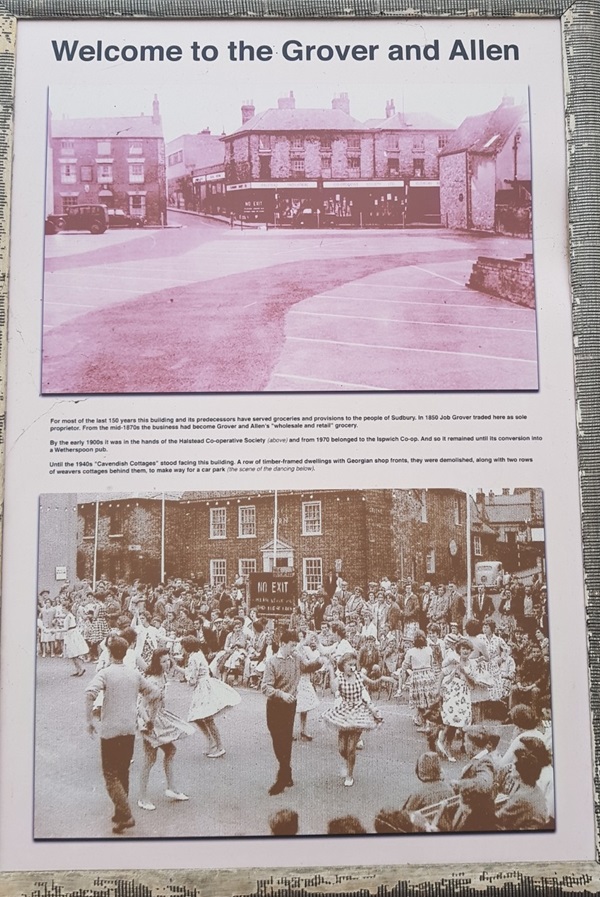
The text reads: For most of the last 150 years this building and its predecessors have served groceries and provisions to the people of Sudbury. In 1850 Job Grover traded here as sole proprietor. From the mid-1870s the business had become Grover and Allen’s wholesale and retail grocery.
By the early 1900s it was in the hands of the Halstead Co-operative Society (above) and from 1970 belonged to the Ipswich Co-op. And so it remained until its conversion into a Wetherspoon pub.
Until the 1940s Cavendish Cottages stood facing this building. A row of timber-framed dwellings with Georgian shop fronts, they were demolished, along with two rows of weavers cottages behind them, to make way for a car park (the scene of the dancing below).
Photographs and text about Market Hill.
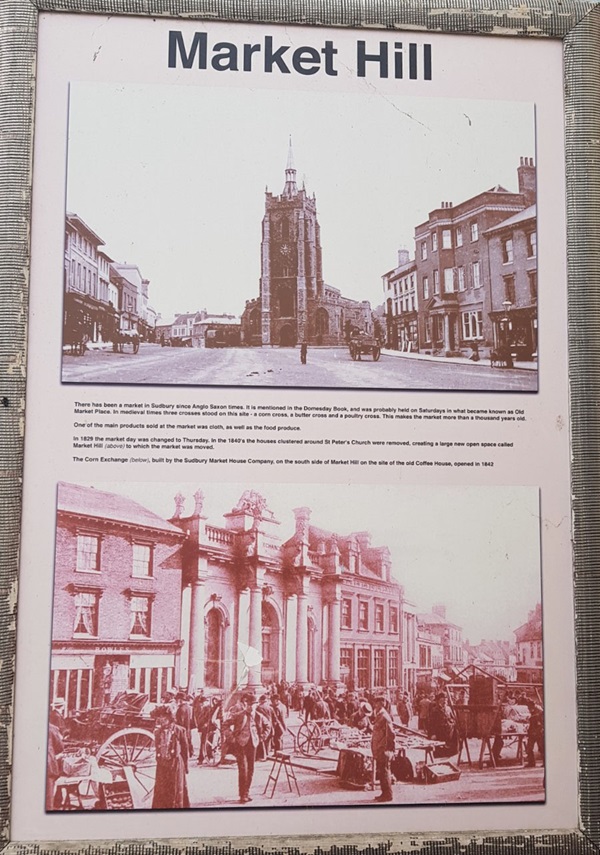
The text reads: There has been a market in Sudbury since Anglo Saxon times. it is mentioned in the Domesday Book, and was probably held on Saturdays in what became known as Old Market Place. In medieval times three crosses stood on this site – a corn cross, a butter cross and a poultry cross. This makes the market more than a thousand years old.
One of the main products sold at the market was cloth, as well as the food produce.
In 1829 the market day was changed to Thursday. In 1840s the houses clustered around St Peter’s Church were removed, creating a large new open space called Market Hill (above) to which he market was moved.
The Corn Exchange (below), built by the Sudbury Market House Company, on the south side of Market Hill on the site of the old Coffee House, opened in 1842
Text about the history of Sudbury.
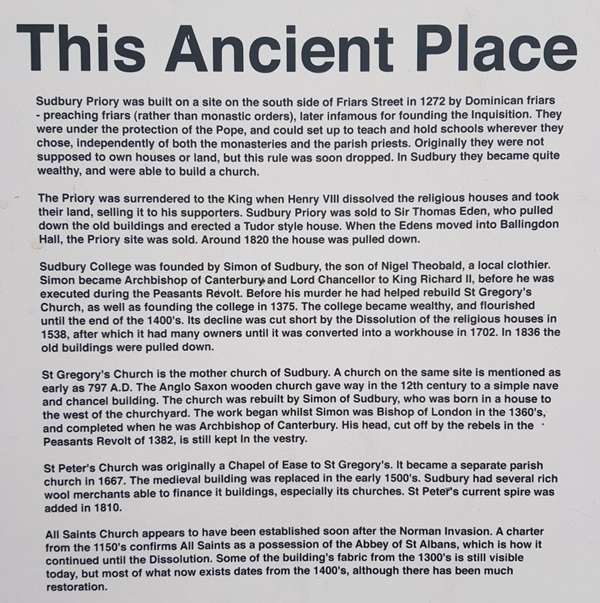
The text reads: Sudbury Priory was built on a site on the south side of Friars Street in 1272 by Dominican friars – preaching friars (rather than monastic orders), later infamous for founding the Inquisition. They were under the protection of the Pope, and could set up to teach and hold schools wherever they chose, independently of both the monasteries and the parish priests. Originally they were not wealthy, and were able to build a church.
The Priory was surrendered to the King when Henry VIII dissolved the religious houses and took their land, selling it to his supporters. Sudbury Priory was sold to Sir Thomas Eden, who pulled down the old buildings and erected a Tudor style house. When the Eden’s moved into Ballingdon Hall, the Priory site was sold. Around 1820 the house was pulled down.
Sudbury College was founded by Simon of Sudbury, the son of Nigel Theobald, a local clothier. Simon became Archbishop of Canterbury and Lord Chancellor to King Richard II, before he was executed during the Peasants Revolt. Before his murder he had helped rebuild St Gregory’s Church, as well as founding the college in 1375. The college became wealthy, and flourished until the end of the 1400s. Its decline was cut short by the Dissolution of the religious houses in 1538, after which it had many owners until it was converted into a workhouse in 1702. In 1836 the old buildings were pulled down.
St Gregory’s Church is the mother church of Sudbury. A church on the same site is mentioned as early as 797AD. The Anglo Saxon wooden church gave way in the 12th century to a simple nave and chancel building. The church was rebuilt by Simon of Sudbury, who was born in a house to the west of the churchyard. The work began whilst Simon was Bishop of London in the 1360s, and completed when he was Archbishop of Canterbury. His head, cut off by the rebels in the Peasants Revolt of 1382, is still kept in the vestry.
St Peter’s Church was originally a Chapel of Ease to St Gregory’s. It became a separate parish church in 1667. The medieval building was replaced in the early 1500s, Sudbury had several rich wool merchants able to finance it buildings. Especially its churches. St Peter’s current spire was added in 1810.
All Saints Church appears to have been established soon after the Norman Invasion. A charter from the 1150s confirms All Saints as a possession of the Abbey of St Albans, which is how it continued until the Dissolution. Some of the building’s fabric from the 1300s is still visible today, but most of what now exists dates from the 1400s, although there has been much restoration.
A photograph and text about Thomas Gainsborough.
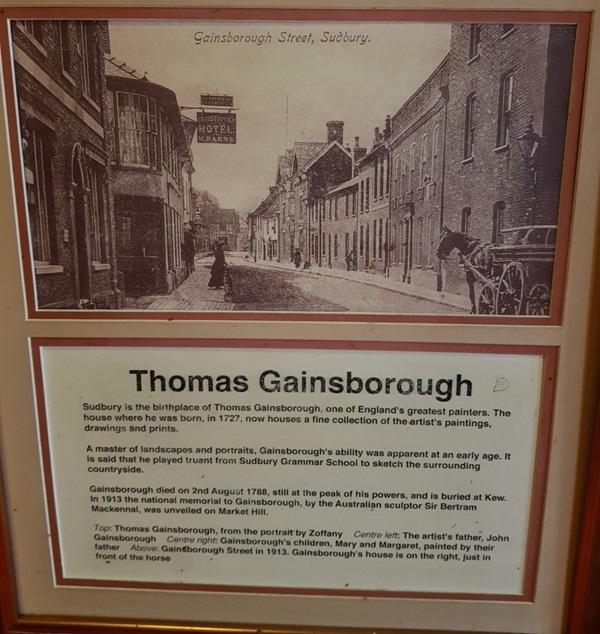
The text reads: Sudbury is the birthplace of Thomas Gainsborough, one of England’s greatest painters. The house where he was born, in 1727, now houses a fine collection of the artist’s paintings, drawings and prints.
A master of landscapes and portraits, Gainsborough’s ability was apparent at an early age. It is said that he played truant from Sudbury Grammar School to sketch the surrounding countryside.
Gainsborough died on 2 August 1788, still at the peak of his powers, and is buried at Kew. In 1913 the national memorial to Gainsborough, by the Australian sculptor Sir Bertram Mackennal, was unveiled on Market Hill.
Above: Gainsborough Street in 1913, Gainsborough’s house is on the right, just in front of the horse.
Original rules from the Gainsborough Silk Weaving Co Ltd mill, 1851.
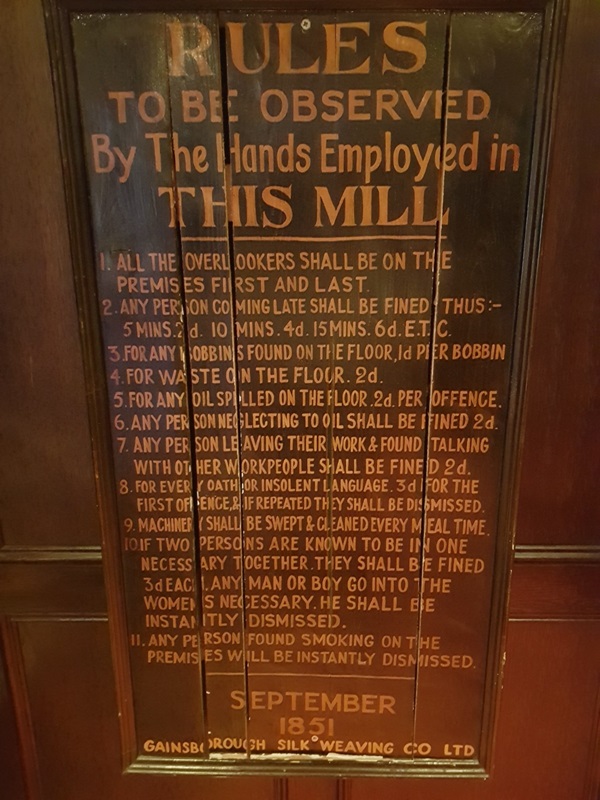
External photograph of the building – main entrance.
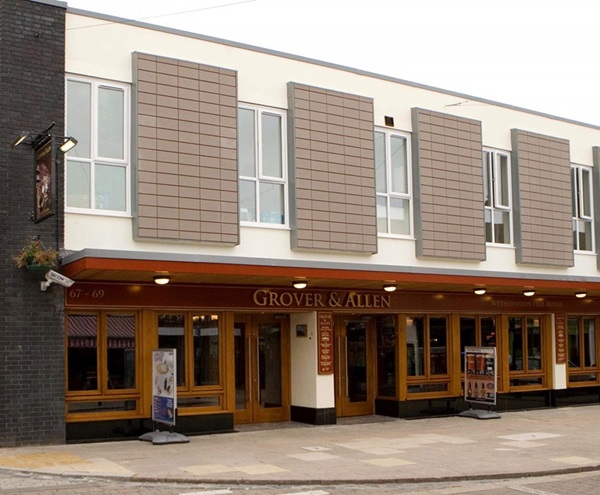
If you have information on the history of this pub, then we’d like you to share it with us. Please e-mail all information to: pubhistories@jdwetherspoon.co.uk